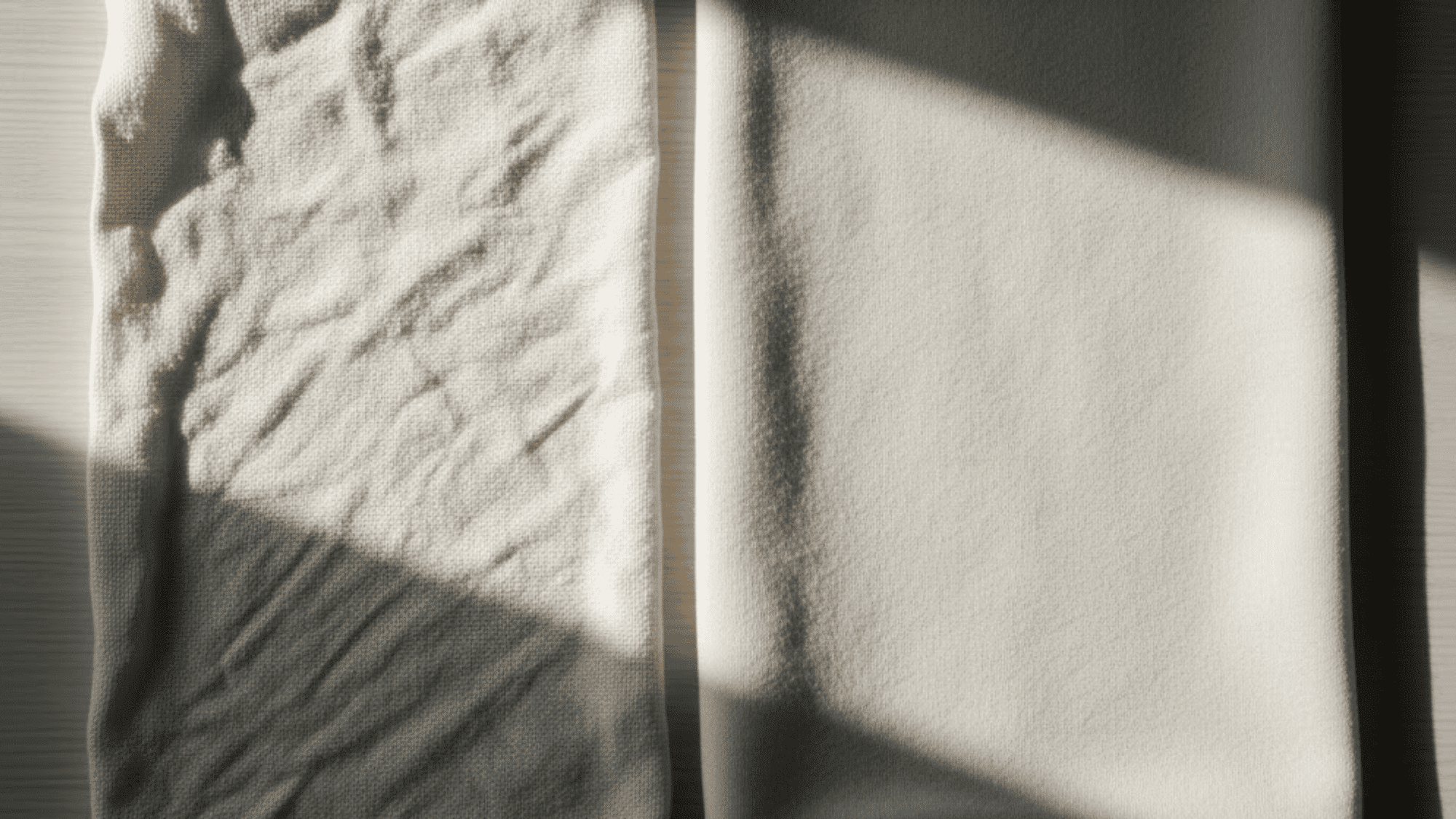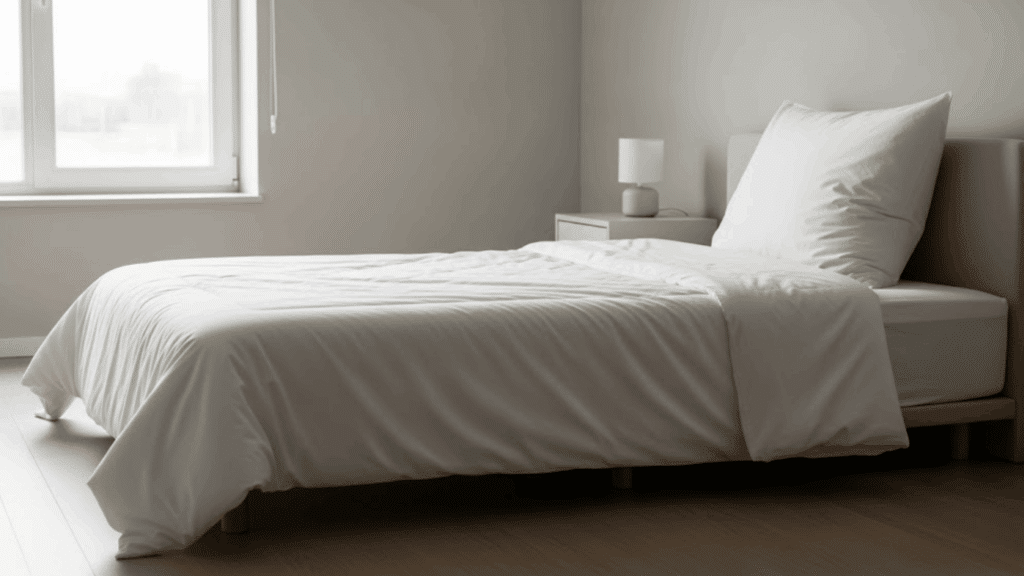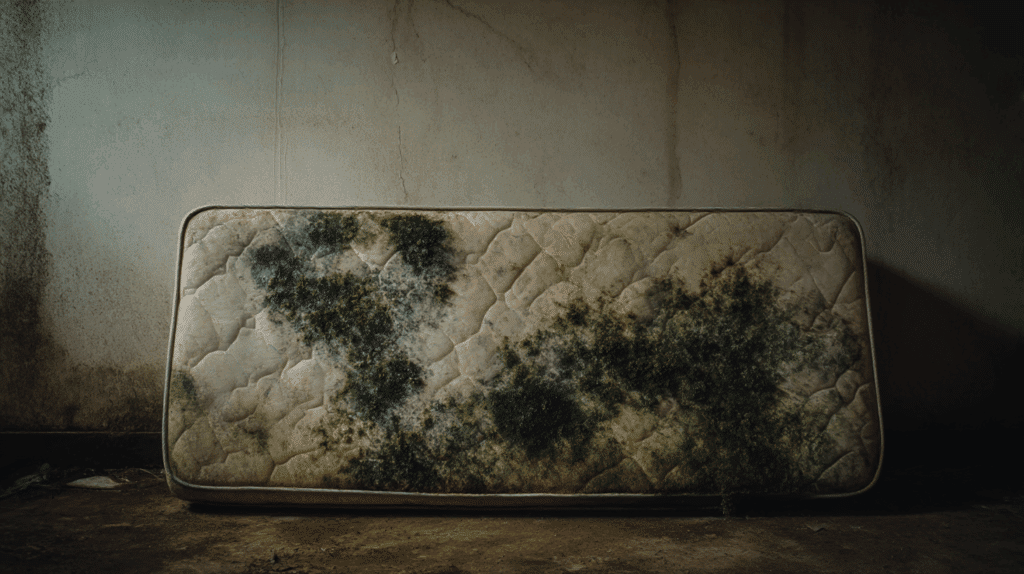Finding the right bedding can be tricky. Sheets that keep slipping off, quilts that don’t cover enough, and pillowcases that feel either too tight or too loose are all common problems.
Most of the time, these issues happen because the bedding size doesn’t match what you actually need. The wrong size not only looks messy but can also make sleeping uncomfortable.
Knowing these details helps you choose sheets that stay in place, quilts that drape properly, and pillowcases that fit just right.
With the right size, your bed looks neater, feels more comfortable, and creates the cozy space you want to relax in every night.
Understanding Bedding Sizes And Why It Matters
Bedding sizes aren’t just about matching labels; they directly affect comfort, style, and how well your bedding stays in place. Sheets that are too small will pop off at the corners, while oversized ones bunch up and wrinkle easily.
Quilts and duvets that don’t match the size of your bed can leave you cold or looking uneven, and pillowcases that don’t fit properly can be frustrating to use.
Bedding comes in standard sizes such as Twin, Full, Queen, King, and California King, each with specific measurements designed to give the best fit.
Choosing the right size makes your bed look neat, keeps everything in place, and helps you sleep more comfortably.
A little attention to measurements saves you from nightly annoyances and turns your bed into a truly cozy and inviting space.
The Complete Bedding Size Chart

Getting the wrong bedding size is frustrating and expensive. This detailed chart provides all the measurements you need for sheets, comforters, and pillowcases across every standard mattress size.
| Bed Size | Mattress Dimensions | Fitted Sheet | Flat Sheet | Pillowcase |
|---|---|---|---|---|
| Twin | 38″ × 75″ | 39″ × 75″ × 14″ | 66″ × 96″ | Standard: 20″ × 30″ |
| Twin XL | 38″ × 80″ | 39″ × 80″ × 14″ | 66″ × 96″ | Standard: 20″ × 30″ |
| Full/Double | 54″ × 75″ | 54″ × 75″ × 14″ | 84″ × 88″ | Standard: 20″ × 30″ |
| Queen | 60″ × 80″ | 60″ × 80″ × 16″ | 90″ × 102″ | Standard: 20″ × 30″ |
| King | 76″ × 80″ | 78″ × 80″ × 16″ | 108″ × 102″ | King: 20″ × 40″ |
| California King | 72″ × 84″ | 72″ × 84″ × 16″ | 108″ × 102″ | King: 20″ × 40″ |
1. Twin
The twin bed is a popular choice for kids’ rooms, dorms, and smaller spaces. A standard twin mattress measures 38 inches wide by 75 inches long.
To cover it properly, fitted sheets are made slightly larger, around 39″ × 75″ with a 14-inch pocket depth. A flat sheet typically runs about 66″ × 96″, providing enough drape on both sides.
Pillowcases usually come in a standard size, about 20″ × 30″, which fits most regular pillows.
2. Twin XL
A Twin XL mattress adds five extra inches of length compared to the regular twin, making it perfect for taller sleepers.
These beds measure 38 inches wide by 80 inches long and are common in college dorms. Fitted sheets are sized around 39″ × 80″ with a 14-inch depth, while flat sheets measure about 66″ × 102″.
Like the twin, Twin XL bedding pairs with standard pillowcases sized 20″ × 30″.
3. Full / Double
The full, also known as a double bed, offers extra width compared to a twin, making it a comfortable option for single sleepers who want more room.
The mattress measures 54″ × 75″. Fitted sheets are usually cut at 54″ × 75″ with a 14-inch pocket depth, and flat sheets measure roughly 84″ × 88″.
Standard pillowcases, about 20″ × 30″, are the usual match, though some people upgrade to larger pillows for added comfort.
4. Queen
The queen is the most popular mattress size for couples and single sleepers who like extra space.
A queen mattress is 60″ × 80″, and its fitted sheets are generally made to fit 60″ × 80″ with a deeper 16-inch pocket. Flat sheets measure about 90″ × 102″, giving enough coverage on both sides.
Standard pillowcases (20″ × 30″) are typically included, though many opt for two pillows per sleeper for maximum comfort.
5. King
A king bed offers plenty of room for couples who want maximum space to stretch out.
Measuring 76″ × 80″, it is one of the widest standard options. Fitted sheets come in about 78″ × 80″ with a 16-inch pocket to accommodate thicker mattresses. Flat sheets are sized generously at around 108″ × 102″.
For pillows, king sets include larger pillowcases measuring about 20″ × 40″, designed to fit king-size pillows.
6. California King
The California King is slightly narrower but longer than a standard king, making it ideal for tall sleepers.
With mattress dimensions of 72″ × 84″, fitted sheets are typically cut to match at 72″ × 84″ with a 16-inch pocket depth. Flat sheets measure about 108″ × 102″, offering the same drape as a standard king.
Pillowcases are usually king-sized, around 20″ × 40″, ensuring a complete fit for elongated pillows.
How Each Bedding Piece is Sized?
Bedding is more than just fabric on your bed; each piece has a specific role and size that affects how well it fits and feels.
Sheets are designed for a snug base, quilts or duvets provide coverage and warmth, and pillowcases complete the setup with comfort.
1. Sheets
Sheets come in two main types: fitted and flat. Fitted sheets have elastic corners and need to match both the length and the depth of your bed so they stay secure.
Standard pocket depth is about 7–12 inches, while deep-pocket sheets range from 13–17 inches for thicker beds. Flat sheets are cut larger to drape neatly over the sides and bottom, giving you extra room to tuck them in.
2. Quilts and Duvets
Quilts and duvet covers are usually made a little larger than the bed to allow for a balanced drape on both sides. For example, a Queen duvet often measures around 90 by 90 inches, while a King runs closer to 104 by 90 inches.
This oversizing prevents gaps and helps keep your bed looking even, while also providing better warmth and coverage.
3. Pillowcases
Pillowcases are designed to match standard pillow lengths rather than bed sizes. A Standard pillowcase is about 20 by 26 inches, Queen pillowcases extend to around 20 by 30 inches, and King pillowcases are about 20 by 36 inches.
Choosing the correct size ensures a smooth, neat fit that feels comfortable to sleep on without extra fabric bunching at the edges.
Oversizing Strategies for Better Fit
Standard bedding sizes work for most people, but sometimes choosing slightly larger dimensions can completely change how your bed looks and feels.
Oversizing isn’t about drowning your bed in fabric; it’s about adding just enough extra material to improve comfort and create a polished style. Here’s how you can make it work:
- Use a larger duvet or quilt – A King duvet on a Queen bed prevents cold spots and gives a hotel-like drape.
- Size up flat sheets – Extra fabric makes tucking easier and keeps sheets secure throughout the night.
- Choose roomy pillowcases – Bigger cases let high-loft or memory foam pillows fit smoothly without stretching.
- Focus on appearance – Oversized bedding often creates a more luxurious, layered look.
- Avoid going too big – The goal is balance; too much extra fabric can feel heavy and messy.
By oversizing with intention, you get better coverage, easier styling, and a bed that feels as inviting as it looks. It’s a simple trick that combines comfort with a touch of everyday luxury.
Fabric, Shrinkage, and Stretch Considerations

The type of fabric you choose for bedding affects not only comfort but also how well it fits over time. Cotton is soft, breathable, and widely used, but it often shrinks slightly after the first few washes unless it has been pre-shrunk.
Linen has a looser weave and may feel a little roomy at first, though it softens beautifully and becomes more comfortable with use. Silk holds its shape and drapes smoothly, but it requires careful washing to prevent damage.
Blended fabrics, such as cotton mixed with polyester, are less likely to shrink or wrinkle, making them easy to maintain. Stretch-knit fabrics offer flexibility, adjusting to different depths and helping fitted sheets stay in place.
Paying attention to fabric behavior ensures your bedding keeps its shape and fit, even after repeated washes.
Measuring Tips and Common Mistakes to Avoid
Getting the right bedding size often comes down to two things: taking proper measurements and avoiding the easy-to-make mistakes that lead to poor fits. Here’s how to make the process smoother.
1. How to Measure Correctly
Start by measuring the length and width of your bed, then note the depth. Depth is especially important because mattresses with toppers or extra padding can add several inches.
Standard sheets usually fit up to 12 inches, while deep-pocket sheets can handle 13–17 inches. Measuring carefully helps you avoid the frustration of bedding that’s either too tight or slipping off during the night.
2. Avoiding “Almost Fits”
Many people rely on standard labels and assume they’ll work, but a bed that’s just an inch deeper or wider can make a big difference.
That’s why it’s important not to settle for “close enough.” Even a small mismatch can cause flat sheets to untuck or fitted sheets to lose their grip.
3. Common Size Mix-Ups
One of the most frequent errors is confusing Full and Queen sheets. They seem similar, but a Full is 54 inches wide, while a Queen is 60 inches wide, which is just enough difference to cause problems.
Another mistake is buying pillowcases that don’t match the pillow length, which leads to cases that are either too tight or too baggy.
Finally, avoid the idea of “one-size-fits-all.” Bedding is cut to specific dimensions, and choosing exact sizes always gives the best results.
Conclusion: Get the Perfect Fit Every Time
Choosing the right bedding size is more than just matching labels; it’s about creating a bed that looks neat, feels comfortable, and lasts through nightly use.
From fitted sheets that stay in place to duvets that drape evenly and pillowcases that match perfectly, every detail matters.
Measuring before you buy, paying attention to fabric behavior, and even oversizing when needed can save you from the frustration of slipping corners or uneven coverage.
The good news? Once you know the basics, shopping for bedding becomes simple. With the right dimensions, your bed turns into a cozy, inviting space that’s easier to style and far more comfortable to sleep in.
What’s your biggest bedding challenge: fitted sheets, duvet covers, or pillowcases? Comment down below and share your thoughts!




